Unit 2.3: Ancient Greece
1/14
There's no tags or description
Looks like no tags are added yet.
Name | Mastery | Learn | Test | Matching | Spaced |
|---|
No study sessions yet.
15 Terms
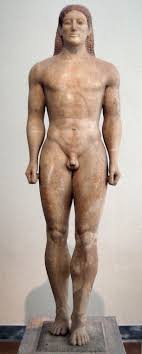
Anavysos Kouros
Artist: N/A
Period/Movement: Archaic Greek
Medium: Marble with remnants of paint
Location: Greece
Significance: strict ideal for men: athletic = god, grave maker, archaic smile, idealized to look like Apollo (yet doesn’t)
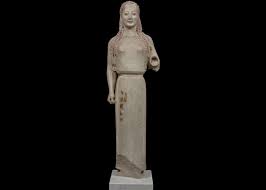
Peplos Kore
Artist: N/A
Period/Movement: Archaic Greek
Medium: Marble, painted details (faded over time)
Location: From the Acropolis
Significance: found in a temple at the Acropolis, representative of the goddess Artemis, Kore= female figure, clothed figure (traditional modesty and gender roles, stiff pose, archaic smile
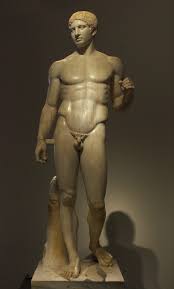
Doryphoros (Spear Bearer)
Artist: N/A
Period/Movement: Classical
Medium: Roman copy (marble) of Greek original (bronze)
Location: Greece
Significance: contrapposto form (classical), represents the ancient Greeks’ idea of perfect human, he wrote a document about human proportions (canon), added support system was Roman copy indicator
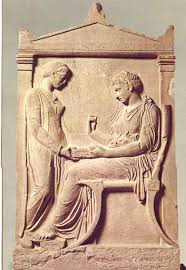
Grave Stele of Hegeso
Artist: N/A
Period/Movement: Classical
Medium: Marble and paint
Location: Greece
Significance: wet drapery, high relief, grave maker, shows Hegeso and servant (she is picking out jewelry), domestic life and women’s role in society
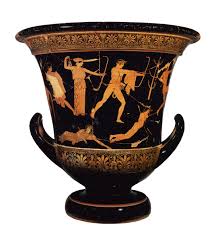
Niobides Krater
Artist: Anonymous vase painter known as Niobid Painter
Period/Movement: Classical
Medium: Clay, red figure technique
Location: Greece
Significance: function: to mix water with wine, center of the vase honors the hero Hercules, on the back: scene of Niobe who has 14 children and brags about them being more beautiful than children of goddess Leto—> results in Apollo and Artemis killing Niobe’s children, sharp contrast in imagery and technique
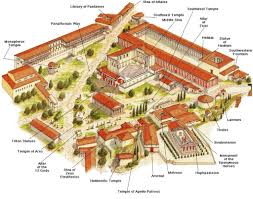
Athenian Agora
Artist: N/A
Period/Movement: Archaic through Hellenistic
Medium: Plan
Location: Greece
Significance: an elevated spot to be closer to the gods, dedicated to goddess Athena, market place, politcal center, a place of sacred spaces, path leading up to Acropolis (Panathenaic Way)
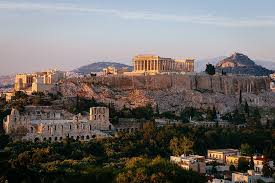
Acropolis
Artist: N/A
Period/Movement: Classical
Medium: Marble
Location: Athens, Greece
Significance: elevated closer to Gods, dedicated to goddess, Athena, holds all the sculptures and he Parthenon, a series of ruins dedicated to the glory of Athena
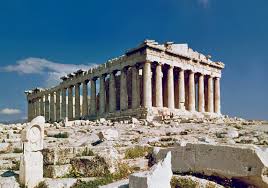
Parthenon
Artist: N/A
Period/Movement: Classical
Medium: Pentelic Marble
Location: Acropolis, Athens
Significance: high relief on metopes, low relief on frieze, triangular composition, storage of gunpowder, treasury, served as a mosque, original temple for Athena, an explosion blew out the heart of the building
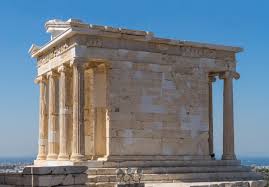
Temple of Athena Nike
Artist: N/A
Period/Movement: Classical
Medium: Pentelic Marble
Location: Acropolis, Athens
Significance: ionic temple columns, depict the battle of the Greeks vs. the Persians, shows a gathering of Gods around the enthroned Zeus, Nike= goddess of victory

Helios, horses, and Dionysus
Artist: N/A
Period/Movement: Classical
Medium: Marble
Location: East Pediment of the Parthenon
Significance: constructed into a pediment, showing standards of canon, Helio is seen rising from the left suggesting the rising sun, horses that pull his chariot, and the reclining male figure has been identified as either Dionysus or Hercules

Victory adjusting her Sandal
Artist: N/A
Period/Movement: Classical
Medium: Marble
Location: Acropolis, Athens
Significance: wet drapery, high relief, Nike sacrifices herself— removing her shoes (walking on holy ground), off balance pose that contrasts with classical style
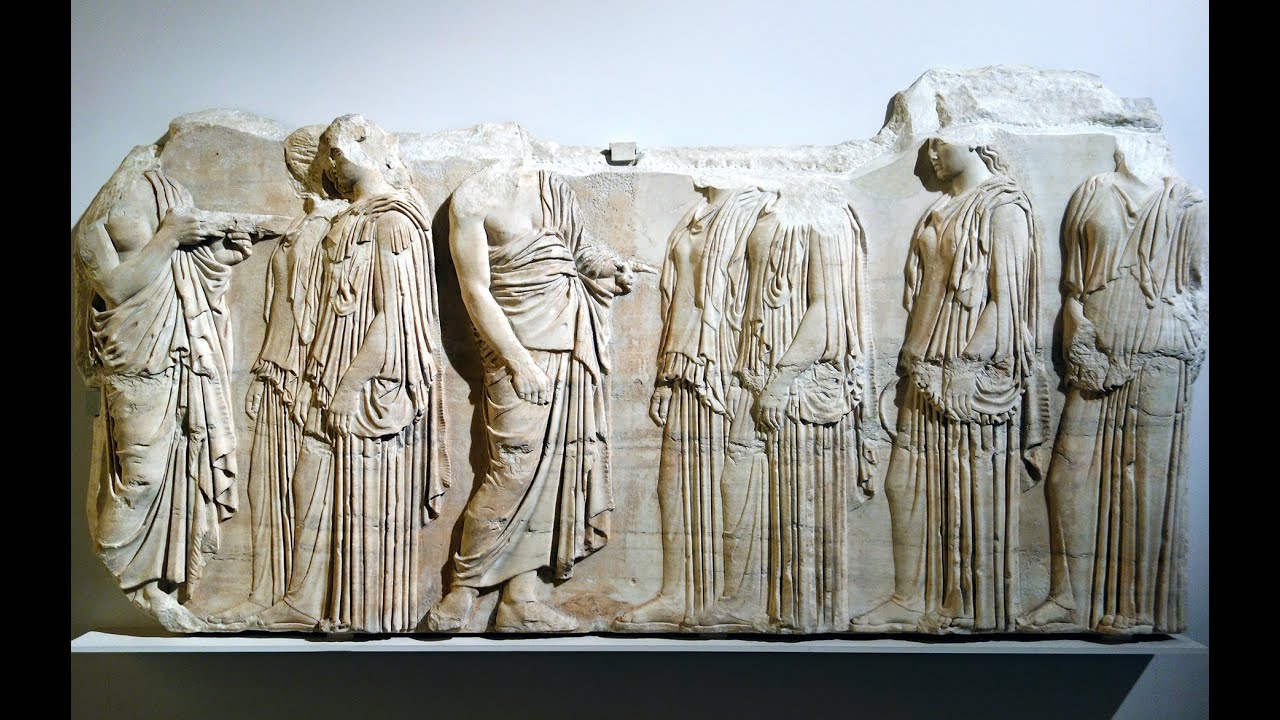
Plaque of the Ergastines
Artist: N/A
Period/Movement: Classical
Medium: Marble
Location: Ionic Frieze on the Parthenon
Significance: frieze, once brightly colored, high relief, wet drapery, representation of Athen’s civic life (citizens, animals and offerings)
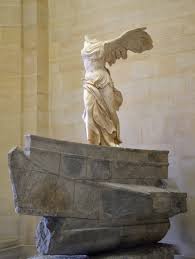
Winged Victory of Samothrace
Artist: N/A
Period/Movement: Hellenistic
Medium: Marble
Location: Greece
Significance: wet drapery, sense of naturalism, the Greeks victory over Rhodes, sense of drama and power, highly expressive
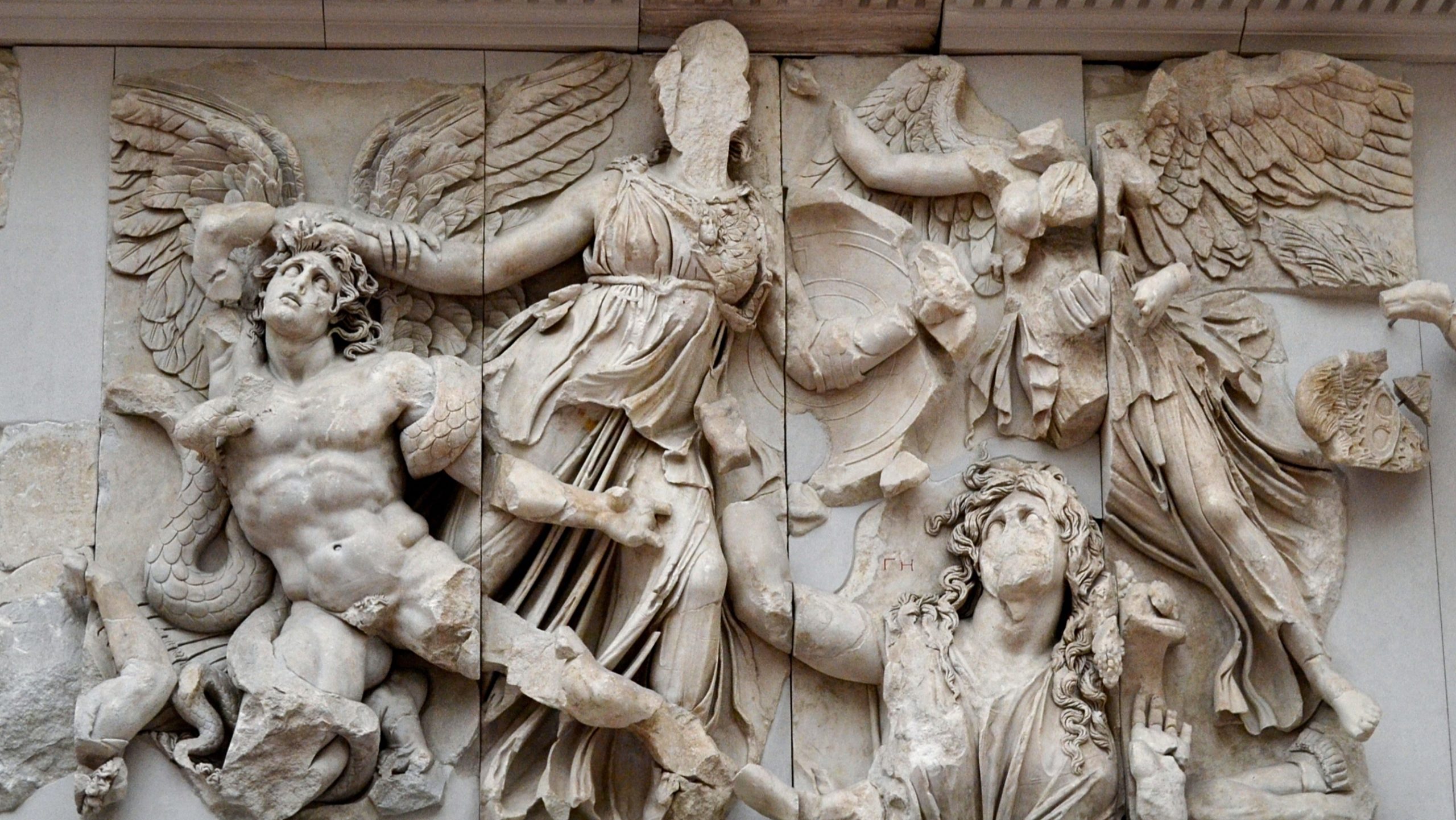
Great Altar of Zeus and Athena at Pergamon
Artist: N/A
Period/Movement: Hellenistic
Medium: Marble
Location: Asia Minor (present-day Turkey)
Significance: expressive and dramatic sculptures, Greek culture’s triumph over chaos, mythic battle between giants and Olympian gods
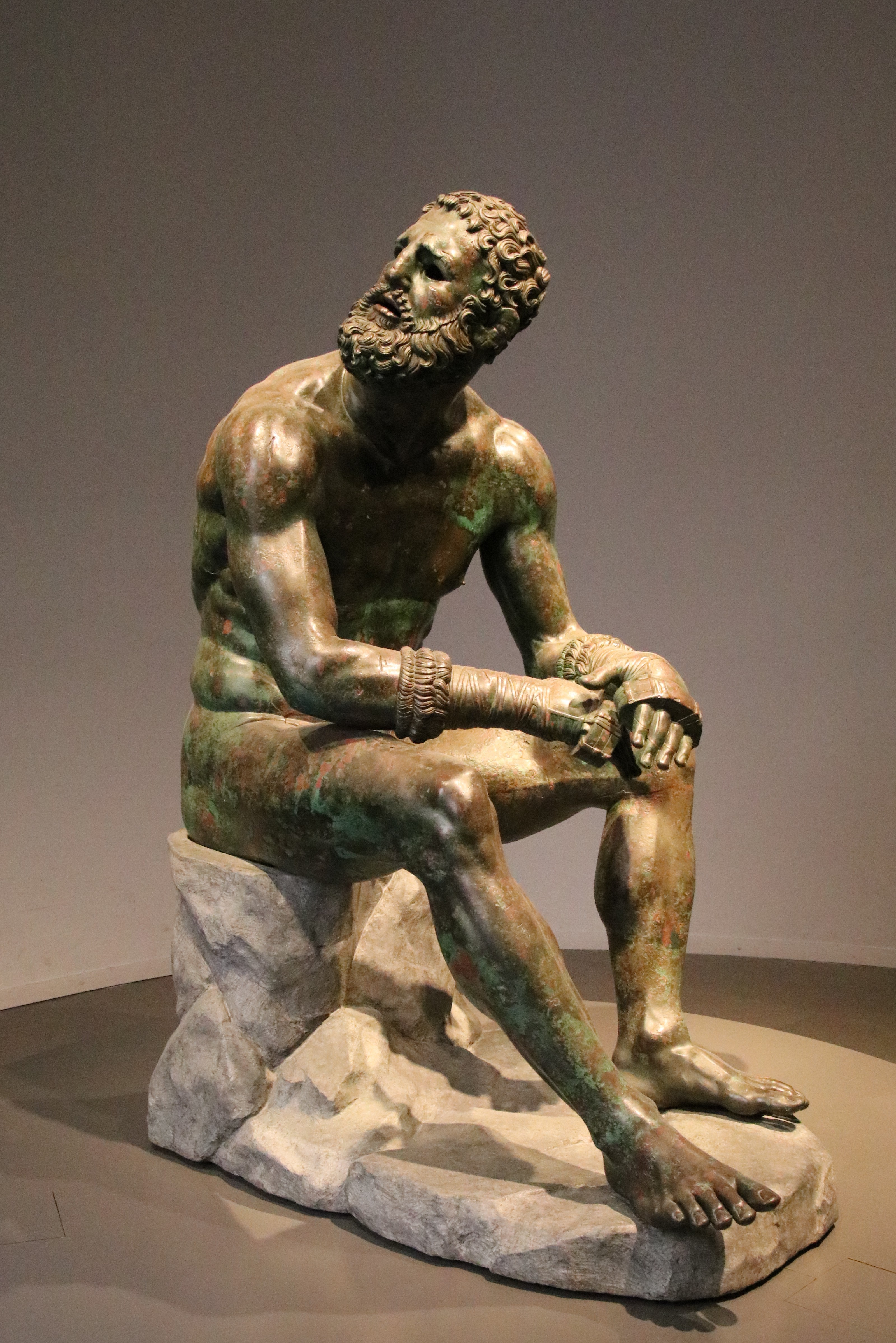
Seated Boxer
Artist: N/A
Period/Movement: Hellenistic
Medium: Bronze
Location: Greece
Significance: hollow and made from lost wax casting, shift in Greek art toward more emotional and diverse subjects, older and defeated athlete